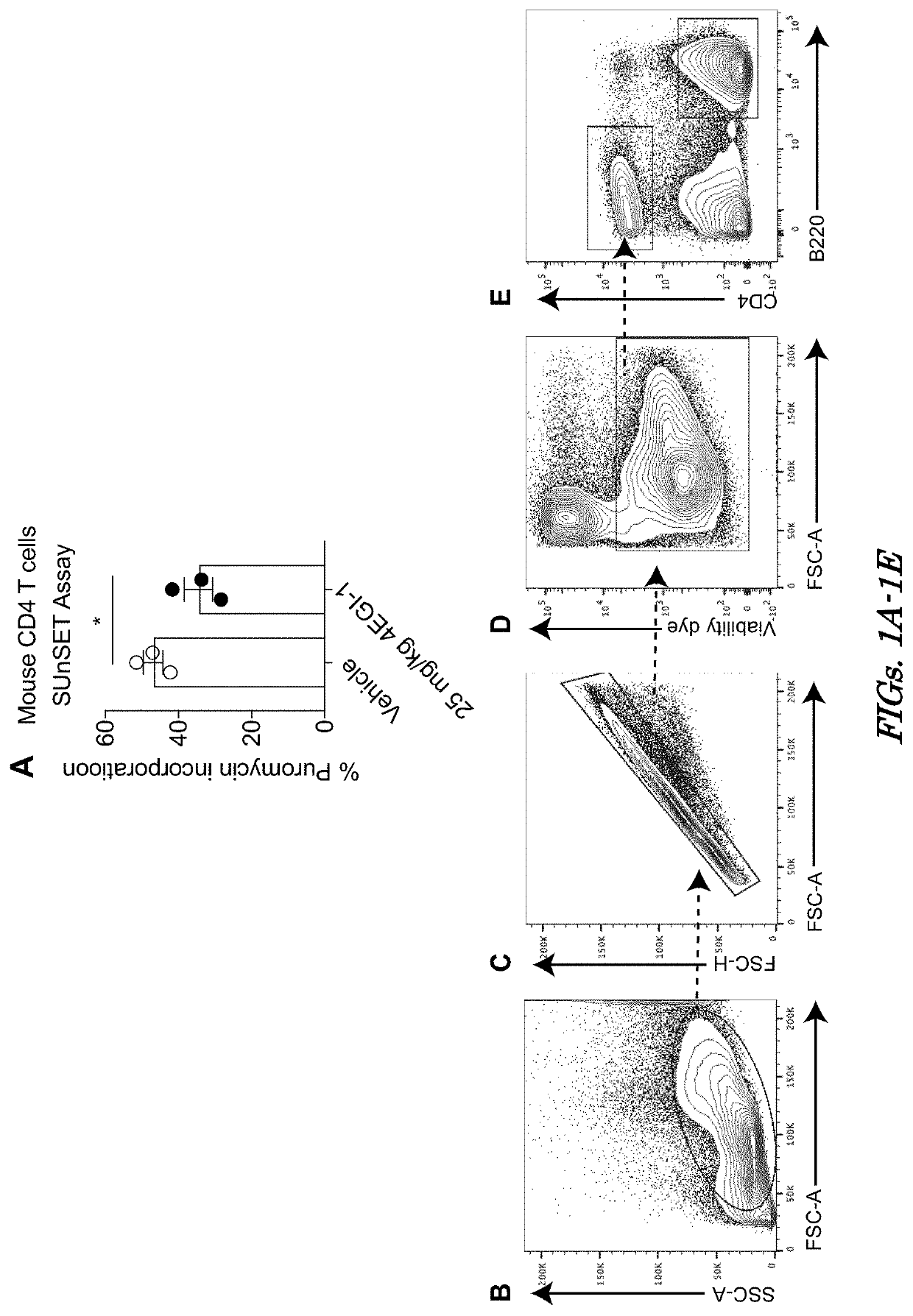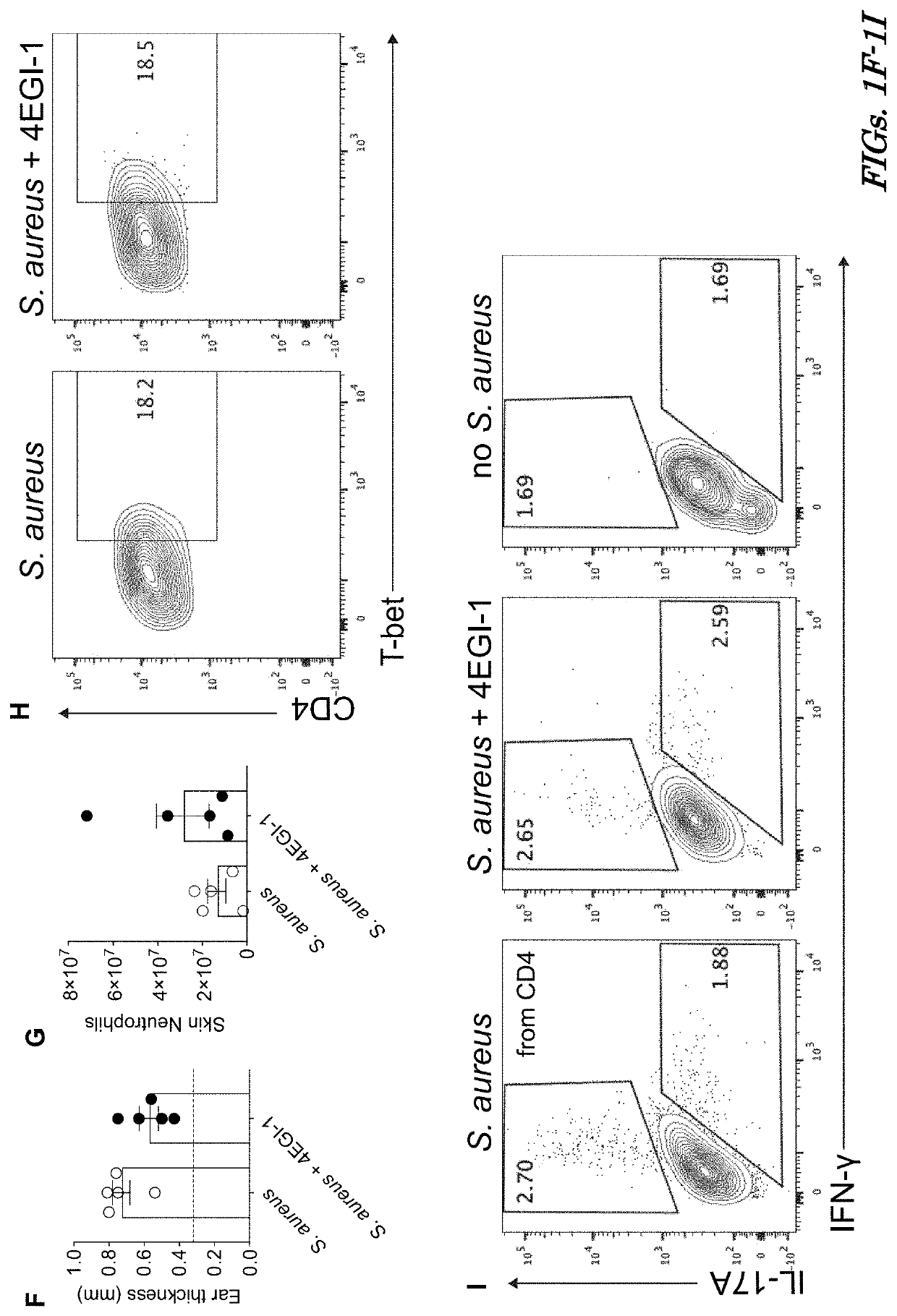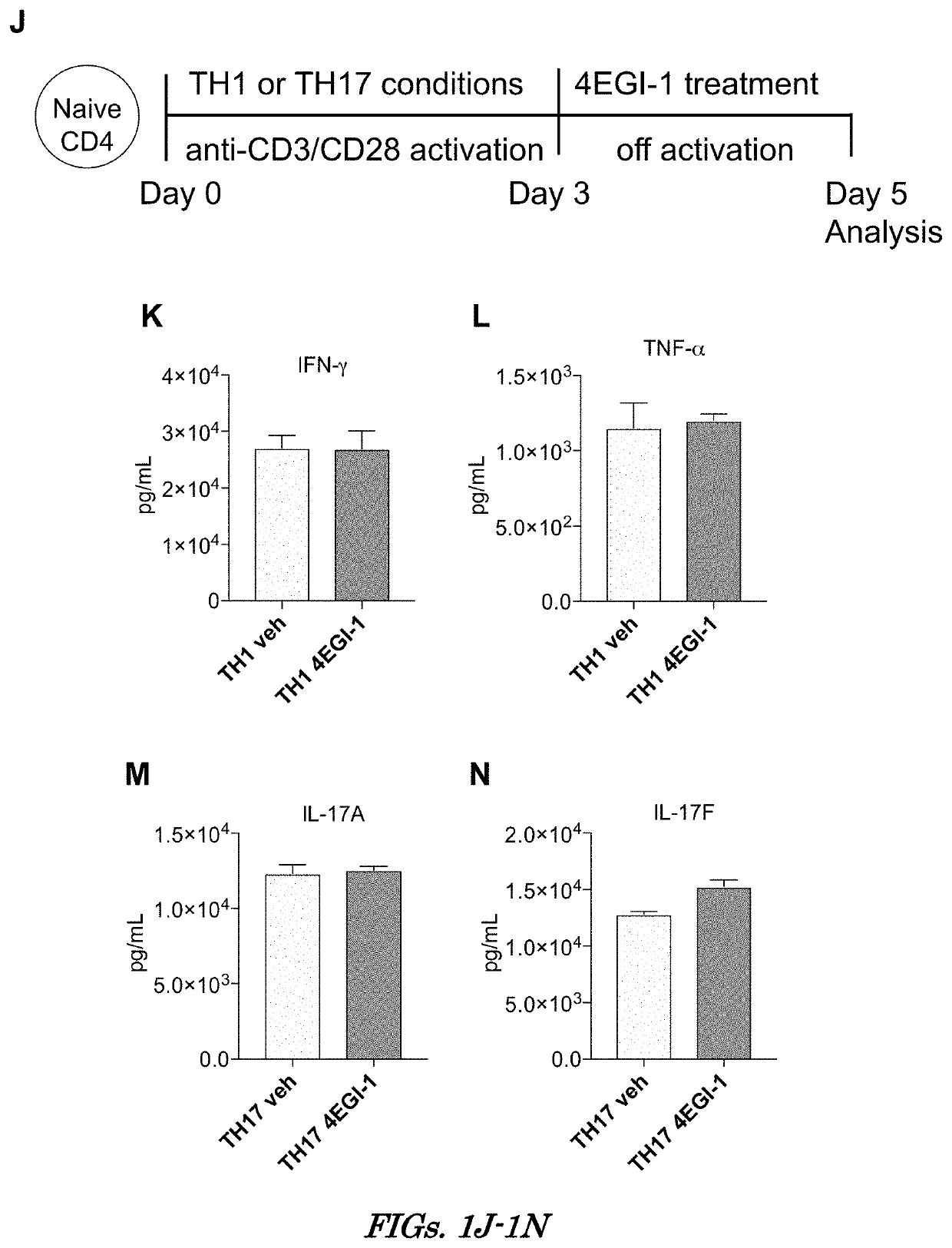Selective inhibition of t follicular helper cells for treatment of autoimmune disorders
a technology autoimmune disorders, which is applied in the field of selective inhibition of t helper cells for the treatment of autoimmune disorders, can solve the problems of autoimmune disease, uncharacterized translational control mechanisms of immune cells, including t helper cells, and achieve the effects of preventing disease progression or occurrence, and reducing the formation of tfh
- Summary
- Abstract
- Description
- Claims
- Application Information
AI Technical Summary
Benefits of technology
Problems solved by technology
Method used
Image
Examples
example 2
ally Higher Levels of TFH Cell eIF4E are Essential for Strong Translation of mRNAs that Mediate TFH Cell Differentiation and Maintenance
[0139]Whether the impact of downregulation of eIF4E activity on TFH cell differentiation is CD4+ T cell intrinsic was determined by engineering reduced levels of eIF4E in a select CD4+ T cell compartment. CD45.2 OT2 T cells are specifically activated by OVA peptide. OT2 T cells were transduced with a lentivirus expressing doxycycline (Dox)-inducible non-silencing (NS) or eIF4E shRNAs, puromycin selected, and transferred into CD45.1 congenic recipients (FIG. 2N). The eIF4E shRNA used was previously established to be eIF4E specific (de la Parra et al., “A Widespread Alternate form of Cap-Dependent mRNA Translation Initiation,”Nat. Commun. 9:3068 (2018), which is hereby incorporated by reference in its entirety). Animals were placed on a Dox diet for the entire study. Seven days following Dox addition, eIF4E silencing in spleen and blood transduced OT2...
example 3
vels of eIF4E are Required for Selective Translation of mRNAs that Drive TFH Cell Differentiation, Function, and Maintenance
[0140]Next, the question of which TFH cell-dependent programs require intrinsically higher levels of eIF4E for translation was investigated. Mice were immunized with OVA / alum and treated with vehicle or 4EGI-1 (FIG. 4A). Then, CD4+ T cells were isolated and RNA sequencing (RNAseq) was performed on total mRNA (transcriptome) and well-translated (≥4 ribosome) polysome-associated mRNA to establish individual mRNA translation activities based on ribosome content. Total mRNA was compared to levels of well-translated mRNAs (translatome). Performing the study on CD4+ T cells allows comparison of an equal cell population between each group, since 4EGI-1 does not impact CD4+ T cell numbers but does impair translation of mRNAs required for their differentiation to TFH cells, providing an unbiased identification of CD4+ T cell programs dependent on higher levels of eIF4E ...
example 4
ndent TFH Cell Differentiation and Maintenance is Blocked by Partial eIF4E Inhibition
[0147]The dependence on higher levels of eIF4E for expression of receptors, transcription factors, and cytokines identified by genome-wide analysis were tested on TFH cell differentiation and maintenance. Animals were immunized with OVA / alum, with and without partial inhibition of eIF4E function by 4EGI-1 (FIG. 5A). In agreement with the genome-wide transcriptomic / translatomic analysis, 4EGI-1 downregulation of eIF4E function did not affect CD4+ T cell activation (CD44high), cell division, or levels of expression of ICOS (FIGS. 5B-5D). However, it did reduce by more than half the expression of PD-1, intranuclear BCL6, and surface CXCR5 on splenic CD4+ T cells (FIGS. 5E-5G). Thus, moderately reduced eIF4E activity specifically impairs T cell differentiation to TFH cells without impacting CD4+ T cell activation.
[0148]CXCR5 is central to CD4+ T cell migration into the B cell zone. Selective translation...
PUM
| Property | Measurement | Unit |
|---|---|---|
| body mass index | aaaaa | aaaaa |
| weight | aaaaa | aaaaa |
| weight | aaaaa | aaaaa |
Abstract
Description
Claims
Application Information
 Login to View More
Login to View More - R&D
- Intellectual Property
- Life Sciences
- Materials
- Tech Scout
- Unparalleled Data Quality
- Higher Quality Content
- 60% Fewer Hallucinations
Browse by: Latest US Patents, China's latest patents, Technical Efficacy Thesaurus, Application Domain, Technology Topic, Popular Technical Reports.
© 2025 PatSnap. All rights reserved.Legal|Privacy policy|Modern Slavery Act Transparency Statement|Sitemap|About US| Contact US: help@patsnap.com



